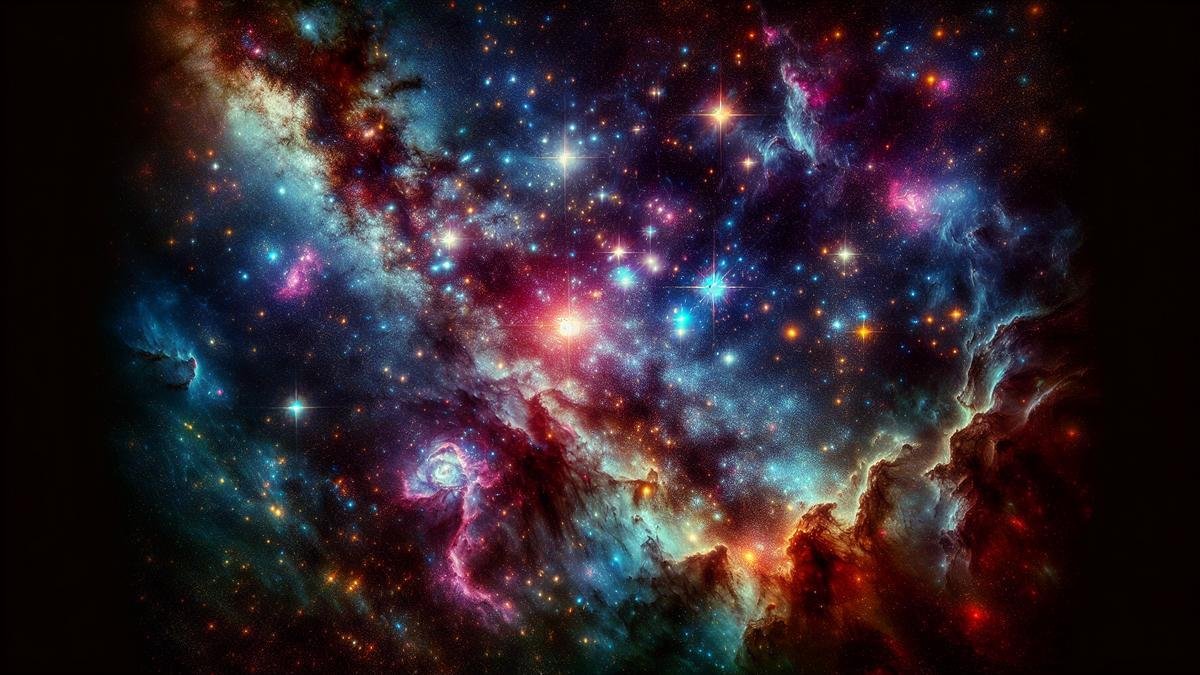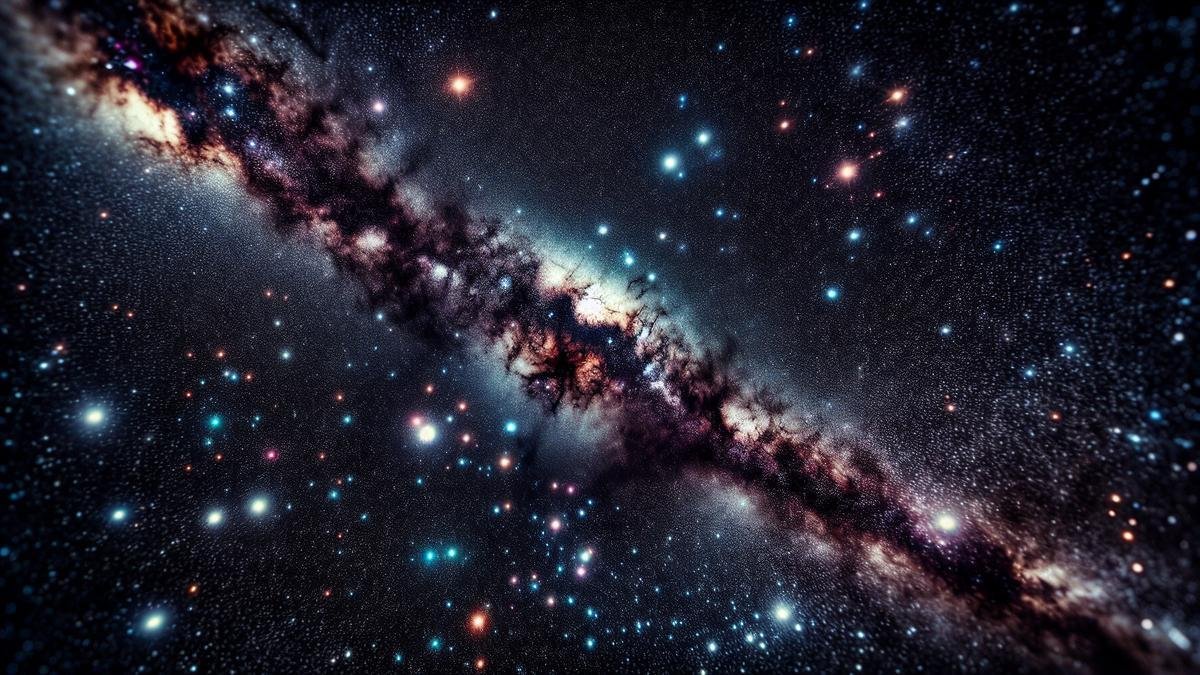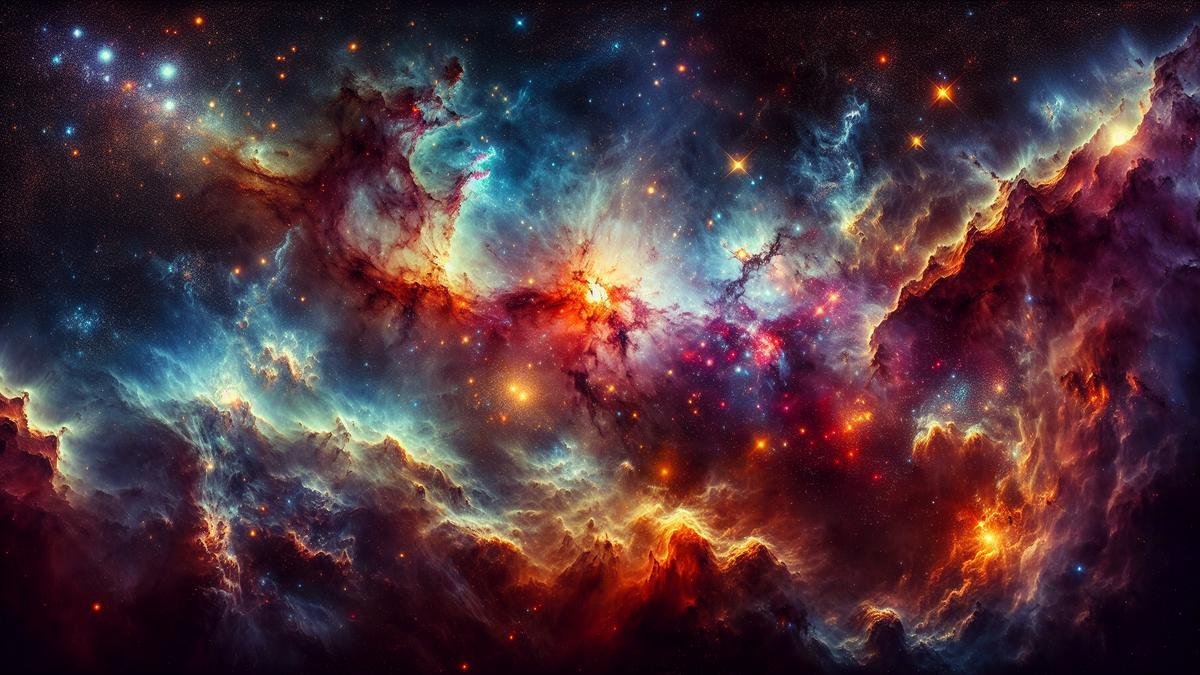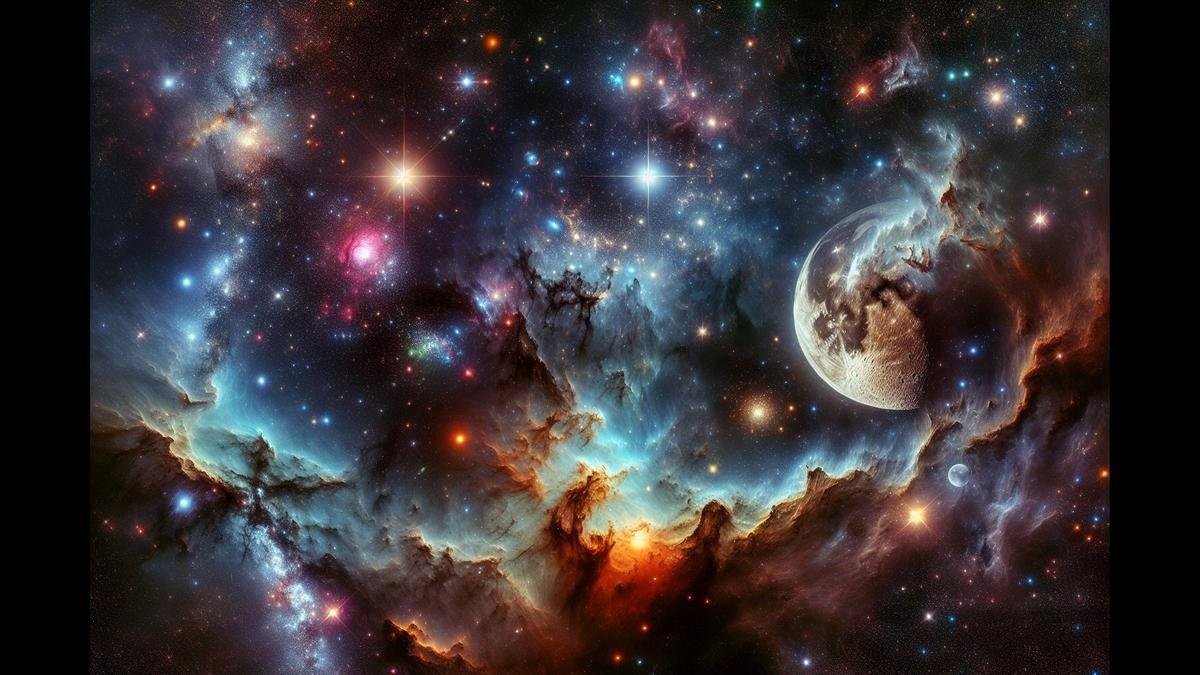Creating stunning HDR images of the night sky is an incredible adventure that will take your astrophotography to new heights. We’ll guide you through everything you need, from selecting the right equipment and camera settings to mastering post-processing techniques. Get ready to unlock the secrets of HDR, understand why its perfect for capturing the night sky, and discover tips that will help you avoid common pitfalls. Whether you’re a beginner or looking to refine your skills, this exploration into HDR astrophotography will bring the cosmos to your lens like never before!
Key Takeaways
- Use a tripod for stability in your shots.
- Choose the right camera settings for night photography.
- Shoot multiple exposures for HDR.
- Edit your images with HDR software.
- Practice and experiment to improve your skills.

Equipment You Need for HDR Astrophotography
Astrophotography is a magical journey. Capturing the night sky in all its glory, especially with High Dynamic Range (HDR) images, can be both thrilling and challenging. Let’s dive into the essential gear that will help you create stunning HDR images of the cosmos.
Choosing the Right Camera
Your camera is your primary tool. Its like choosing the right brush for a painter. For HDR astrophotography, you need a camera that can handle low light conditions and has a good dynamic range.
- DSLR vs. Mirrorless: Both types have their pros and cons. DSLRs are robust and have a wide range of lenses. Mirrorless cameras are lighter and have advanced features. You can read more about the differences here.
- Sensor Size: Full-frame sensors are ideal as they capture more light and detail. However, APS-C sensors can also work well if youre on a budget.
- ISO Performance: Look for a camera with good high ISO performance. This helps in capturing faint stars without too much noise.
Here’s a quick comparison table of some top cameras for astrophotography:
| Camera Model | Type | Sensor Size | ISO Range | Special Features |
|---|---|---|---|---|
| Canon EOS R5 | Mirrorless | Full-Frame | 100-51200 | 45 MP, 8K Video, Dual Pixel AF |
| Nikon D850 | DSLR | Full-Frame | 64-25600 | 45.7 MP, 4K UHD Video, Silent Mode |
| Sony A7 III | Mirrorless | Full-Frame | 100-51200 | 24.2 MP, 4K Video, Eye AF |
For a detailed review of the top cameras for astrophotography in 2024, check out this article.
Essential Lenses for Night Sky Photography
Lenses are just as crucial as the camera itself. They determine how much light hits the sensor and how sharp your images will be.
- Wide-Angle Lenses: These are the go-to lenses for capturing vast expanses of the night sky. They have a wider field of view which is perfect for capturing the Milky Way.
- Fast Aperture: Look for lenses with a wide aperture (f/2.8 or lower). This allows more light to enter, making it easier to capture faint stars and details.
- Prime vs. Zoom: Prime lenses usually offer better sharpness and lower distortion. However, zoom lenses provide flexibility in framing your shots.
Here’s a table of some recommended lenses:
| Lens Model | Type | Focal Length | Aperture | Special Features |
|---|---|---|---|---|
| Sigma 14mm f/1.8 Art | Prime | 14mm | f/1.8 | Ultra-wide, Excellent Sharpness |
| Rokinon 24mm f/1.4 | Prime | 24mm | f/1.4 | Great for Milky Way Photography |
| Tamron 15-30mm f/2.8 | Zoom | 15-30mm | f/2.8 | Versatile, Image Stabilization |
For more details on the best lenses for capturing the night sky, visit this link.
Understanding HDR in Astrophotography
What is HDR?
High Dynamic Range, or HDR, is a technique that allows you to capture a greater range of light and detail in your photos. When you look at the night sky, you see a vast array of brightness levels, from the faintest stars to the glowing moon. Your camera, however, can struggle to capture this full range in a single shot. HDR photography solves this by combining multiple exposures into one image, bringing out the details in both the dark and bright areas.
Why Use HDR for Night Sky Images?
When youre out under the stars, capturing the night sky, you want to reveal the intricate details that are often hidden in the shadows or washed out by bright lights. HDR helps you achieve this by merging several photos taken at different exposures. This way, you get a more balanced and detailed final image, showcasing the beauty of the cosmos.
Benefits of HDR in Astrophotography
Enhanced Detail: HDR allows you to capture the fine details in both the shadows and highlights, making your night sky images more vivid and breathtaking.
Balanced Exposure: By combining multiple exposures, HDR helps you avoid overexposed or underexposed areas in your photos, resulting in a more evenly lit image.
Realistic Representation: HDR can make your photos look more like what you see with your own eyes, capturing the true essence of the night sky.
How to Create Stunning HDR Images of the Night Sky
Creating HDR images of the night sky involves a few key steps. Heres a simple guide to get you started.
Equipment Youll Need
To create HDR images, youll need some essential gear:
- Camera: A DSLR or mirrorless camera with manual settings.
- Tripod: To keep your camera steady during long exposures. Learn more about choosing the right tripod here.
- Lens: A wide-angle lens is ideal for capturing the vastness of the night sky. Check out some essential lenses here.
- Remote Shutter Release: To avoid camera shake when taking photos.
- Software: Photo editing software that supports HDR merging, like Adobe Lightroom or Photoshop.
Setting Up Your Camera
- Find a Dark Location: Light pollution can ruin your shots. Find a location away from city lights.
- Set Up Your Tripod: Ensure your camera is stable and wont move during the exposure.
- Manual Mode: Switch your camera to manual mode to control the exposure settings.
Taking the Shots
- Focus: Use manual focus to ensure the stars are sharp.
- Exposure Bracketing: Take multiple shots at different exposure levels. For example, one underexposed, one correctly exposed, and one overexposed.
- ISO Settings: Use a high ISO to capture more light, but be cautious of noise.
- Aperture: Use a wide aperture (low f-number) to let in more light.
- Shutter Speed: Adjust the shutter speed to capture enough light without causing star trails.
Merging the Photos
Once you have your shots, its time to merge them into an HDR image.
- Import Photos: Import your photos into your HDR software.
- Align Images: Ensure the images are aligned correctly to avoid ghosting.
- Merge: Use the HDR merge function to combine the photos.
- Adjustments: Make any necessary adjustments to enhance the final image.

Setting Up Your Camera for HDR Night Sky Shots
Creating stunning HDR images of the night sky can be a thrilling adventure. The night sky, with its twinkling stars and majestic celestial bodies, offers a perfect canvas for your HDR photography. But to make the most of it, you need to set up your camera correctly. Let’s dive in!
Adjusting ISO Settings
First things first, let’s talk about ISO settings. The ISO setting on your camera determines how sensitive the sensor is to light. For night sky photography, you want a high ISO to capture as much light as possible.
| ISO Setting | Light Sensitivity | Noise Level |
|---|---|---|
| 100-400 | Low | Minimal |
| 800-1600 | Moderate | Noticeable |
| 3200-6400 | High | High |
| 12800+ | Very High | Very High |
When shooting the night sky, it’s usually best to start with an ISO setting of around 1600. This strikes a good balance between light sensitivity and noise. If your camera handles noise well, you might even push it higher.
Pro Tip: Use a noise reduction software in post-processing to clean up any unwanted noise that creeps into your shots.
Shutter Speed and Aperture
Next up, let’s chat about shutter speed and aperture. These two settings are crucial for capturing the perfect HDR night sky shot.
Shutter Speed
The shutter speed determines how long your camera’s sensor is exposed to light. For night sky shots, you’ll typically use a long exposure to gather as much light as possible.
| Shutter Speed | Effect |
|---|---|
| 1/4000 – 1/1000 | Freezes fast-moving objects |
| 1/500 – 1/60 | Captures moderate movement |
| 1/30 – 1/4 | Shows motion blur |
| 1/2 – 30 seconds | Suitable for low-light conditions |
Start with a shutter speed of around 20-30 seconds. This should give you enough time to capture the faint details of the night sky without causing star trails. If you want to avoid star trails altogether, consider using the “500 Rule,” which suggests dividing 500 by your lens’s focal length to determine the maximum exposure time.
Example: For a 24mm lens, 500 ÷ 24 ≈ 21 seconds.
Aperture
The aperture controls how much light enters your camera. A wider aperture (lower f-number) allows more light to hit the sensor, which is essential for night photography.
| Aperture (f-stop) | Light Entry | Depth of Field |
|---|---|---|
| f/1.4 – f/2.8 | High | Shallow |
| f/3.5 – f/5.6 | Moderate | Moderate |
| f/8 – f/16 | Low | Deep |
For night sky shots, you want to use the widest aperture your lens allows, typically around f/2.8 or wider. This helps to gather as much light as possible, making those stars pop.
Pro Tip: If your lens doesn’t have a very wide aperture, don’t worry. Just compensate with a longer shutter speed or a higher ISO.
Post-Processing Your HDR Night Sky Images
When youre diving into the magical world of HDR astrophotography, post-processing is where the real magic happens. You’ve captured those stunning night sky images, and now it’s time to enhance them.
Software for HDR Editing
Choosing the right software can make a world of difference. Here are some popular options:
| Software | Features |
|---|---|
| Adobe Photoshop | Layer blending, advanced editing tools |
| Adobe Lightroom | Easy-to-use interface, excellent for beginners |
| Aurora HDR | Specialized HDR tools, user-friendly |
| Photomatix Pro | Wide range of HDR options, batch processing |
Each of these tools offers something special. Adobe Photoshop and Lightroom are industry standards, but Aurora HDR and Photomatix Pro are specifically tailored for HDR work.
Combining Multiple Exposures
Combining multiple exposures is the heart of creating HDR images. Heres a step-by-step guide:
- Import Your Images: Load your bracketed shots into your chosen software.
- Align the Images: Ensure all images are perfectly aligned to avoid ghosting.
- Merge the Exposures: Use the HDR merge function to blend the images.
- Adjust Tonemapping: Fine-tune the tonemapping to balance highlights and shadows.
Pro Tip: Always shoot in RAW format. It gives you more flexibility during post-processing.
Enhancing Colors and Details
Once your images are merged, its time to bring out the colors and details.
Color Enhancement
Use the HSL (Hue, Saturation, and Luminance) sliders to adjust the colors. Boost the saturation of the Milky Way or the nebulae to make them pop.

Tips for Capturing Stunning HDR Night Sky Photos
Best Times to Shoot
When you’re looking to capture breathtaking HDR images of the night sky, timing can be everything. Astronomical twilight is your golden hour. This is when the sky is dark enough to see stars, but there’s still a hint of sunlight below the horizon. Its a sweet spot for balancing light and dark in your photos.
| Time of Day | Description |
|---|---|
| Astronomical Twilight | Perfect for capturing stars with a hint of sunlight. |
| Midnight | Deep darkness, ideal for capturing the Milky Way and other faint objects. |
| Pre-Dawn | Another twilight phase, offering a different light balance. |
Remember, moon phases are crucial too. A full moon can wash out the stars, so aim for a new moon or crescent moon. Youll get the darkest skies and the most vivid stars.
Dealing with Light Pollution
Light pollution can be a real thorn in your side when you’re trying to capture the night sky. However, with a few tricks, you can overcome it.
Finding the Perfect Location
Scout out a dark sky site. These are areas far from city lights where the stars shine the brightest. The International Dark-Sky Association (IDA) has a list of designated dark sky parks that can be a great starting point.
| Location Type | Pros | Cons |
|---|---|---|
| Dark Sky Parks | Minimal light pollution, great for star visibility. | May require travel. |
| Rural Areas | Less light pollution than cities, accessible. | Still some light pollution. |
| Mountains | High altitude, clear skies. | Can be remote and hard to access. |
When you’re stuck with light pollution, use light pollution filters. These filters can help block out artificial light, allowing the stars to shine through. Check out some of the best filters for enhancing your shots here.
Tips for Capturing Stunning HDR Night Sky Photos
Creating stunning HDR images of the night sky involves blending multiple exposures to capture the full range of light. Heres how to get started:
- Use a Tripod: Stability is key. A sturdy tripod will keep your camera steady for long exposures. For more on finding the right tripod, see this guide.
- Bracket Your Shots: Take multiple shots at different exposures. Typically, youll want at least three: one underexposed, one correctly exposed, and one overexposed.
- Use HDR Software: Combine your bracketed shots using HDR software. Programs like Adobe Photoshop or Lightroom can blend the exposures seamlessly.
- Manual Focus: Autofocus can struggle in low light. Switch to manual focus and use live view to zoom in on a bright star to get it sharp.
- ISO Settings: Start with a lower ISO to reduce noise. You can increase it if needed, but be mindful of the trade-off between sensitivity and noise.
- Aperture: Use a wide aperture (low f-number) to let in as much light as possible. This helps capture faint stars and details in the Milky Way.
- Exposure Time: Experiment with different exposure times. Too long, and you’ll get star trails; too short, and you might not capture enough light.
- Remote Shutter Release: Avoid camera shake by using a remote shutter release or the cameras self-timer.
Best Times to Shoot
Timing your shoot can make all the difference. Heres a quick rundown:
- Astronomical Twilight: This is the period when the sun is between 12 and 18 degrees below the horizon. The sky is dark, but there’s still a faint glow. Its perfect for capturing the Milky Way and other celestial objects with a bit of light.
- Midnight: The sky is at its darkest, making it ideal for capturing faint stars and deep-sky objects. However, youll need to be mindful of light pollution.
- Pre-Dawn: Another twilight phase that offers a different light balance. Its a great time to capture the transition from night to day.
Dealing with Light Pollution
Light pollution can be a challenge, but there are ways to work around it:
- Find a Dark Sky Site: Look for areas far from city lights. The International Dark-Sky Association (IDA) has a list of designated dark sky parks that can be a great starting point.
- Use Light Pollution Filters: These filters can help block out artificial light, allowing the stars to shine through. Check out some of the best filters for enhancing your shots here.
- Shoot During a New Moon: A full moon can wash out the stars, so aim for a new moon or crescent moon. Youll get the darkest skies and the most vivid stars.
Common Mistakes to Avoid in HDR Astrophotography
HDR (High Dynamic Range) imaging can transform your night sky photos into breathtaking works of art. But, there are some pitfalls that can trip you up. Lets dive into how you can avoid these common mistakes.
Overexposing Your Shots
Overexposure is a frequent issue. You might think that capturing more light will reveal more stars, but it can wash out the details.
Example:
| Exposure Time | Result |
|---|---|
| 10 seconds | Balanced stars and details |
| 30 seconds | Overexposed and washed out stars |
Tip: Use shorter exposure times and stack multiple images to gather more light without overexposing.
Ignoring Composition
Composition is crucial. The night sky is vast, and without a focal point, your image can look chaotic.
Example:
| Composition Element | Effect |
|---|---|
| Foreground object (tree, mountain) | Adds depth and interest |
| Random sky shot | Can appear flat and uninteresting |
Tip: Include elements like a silhouetted tree or a mountain range to give your shot depth.
Frequently Asked Questions
How can you best capture stars for HDR images of the night sky?
First, use a tripod to stabilize your camera. Then shoot multiple exposures: some short to capture stars, and others longer for details. Blend them in post-processing using software.
What camera settings should you use for creating stunning HDR images of the night sky?
Set your camera to manual mode. Use a low ISO to reduce noise, a wide aperture to let in more light, and vary the shutter speed for multiple exposures. Experiment and adjust!
Which software is best for combining HDR images of the night sky?
Adobe Photoshop and Lightroom are top choices. Photomatix is another great option. All have powerful tools to blend exposures and enhance details.
How do you avoid noise in HDR night sky images?
Keep the ISO low. Use noise reduction tools in post-processing. Also, shoot in RAW to retain more data and detail, which helps in reducing noise later.
Which lenses work well for capturing stunning HDR images of the night sky?
Wide-angle lenses are perfect. Look for lenses with fast apertures (f/2.8 or lower). They let in more light and capture broader scenes of the night sky.



